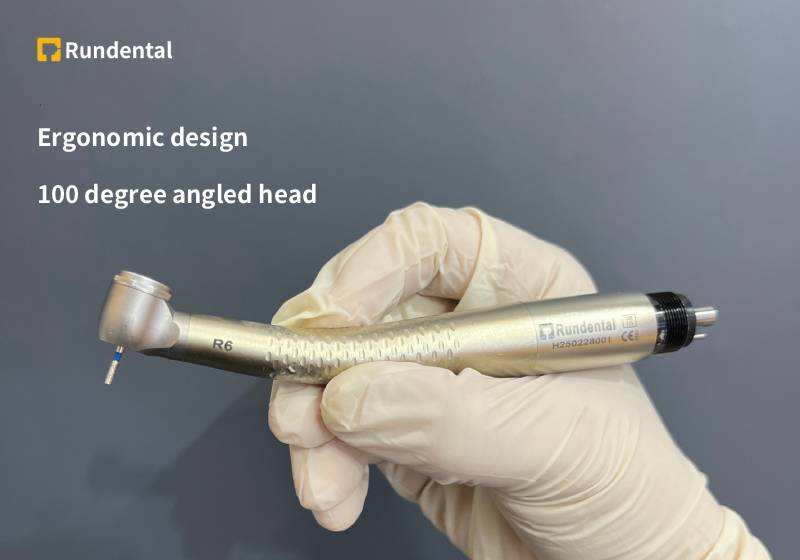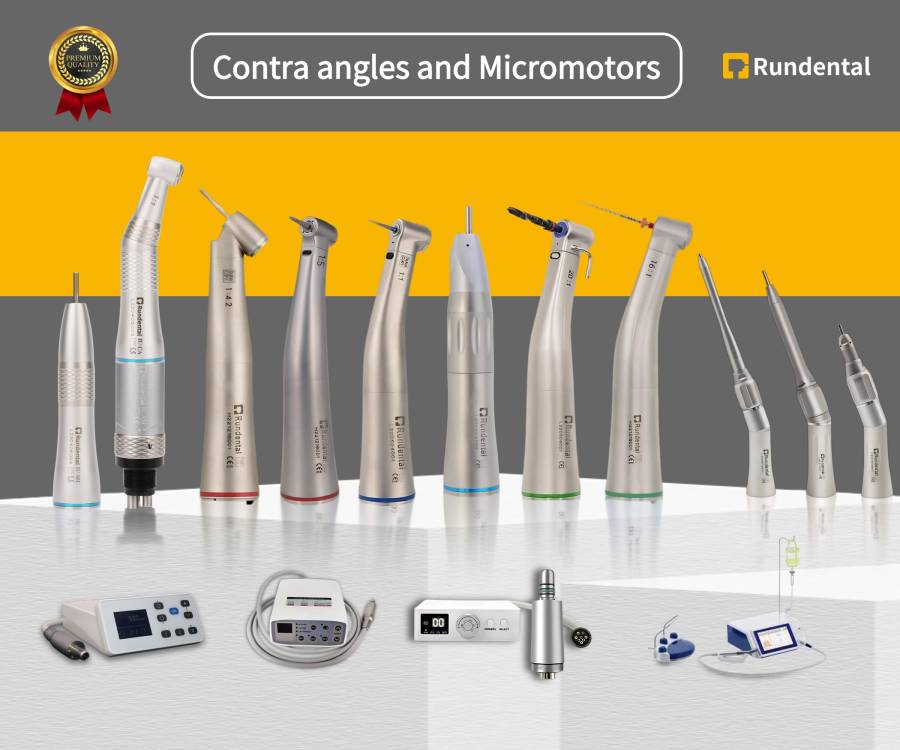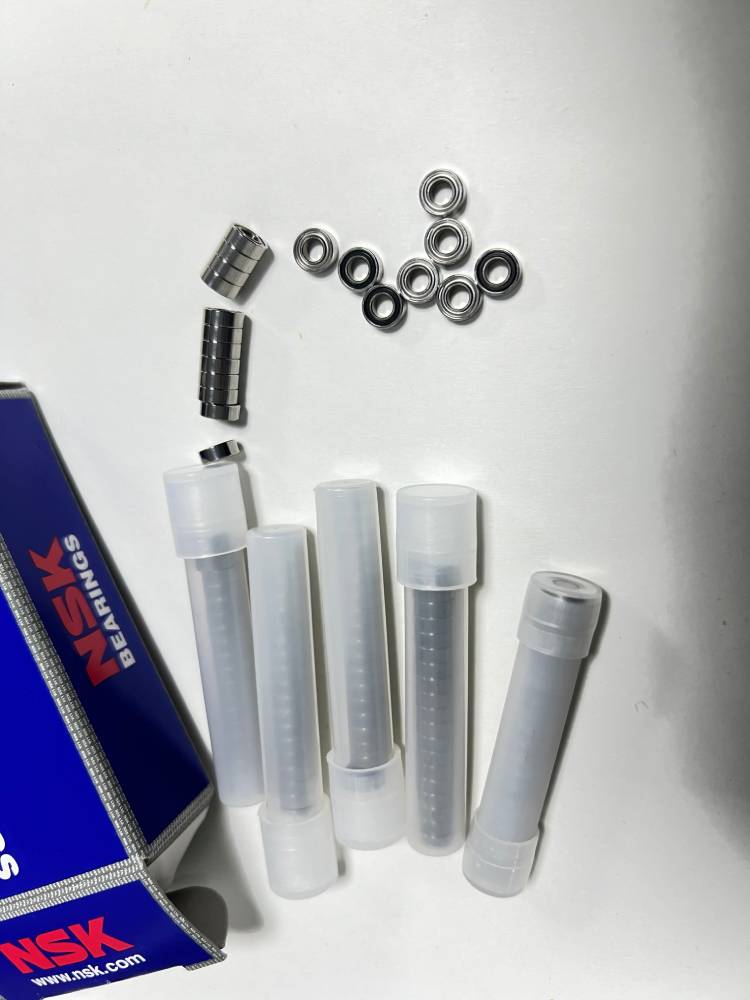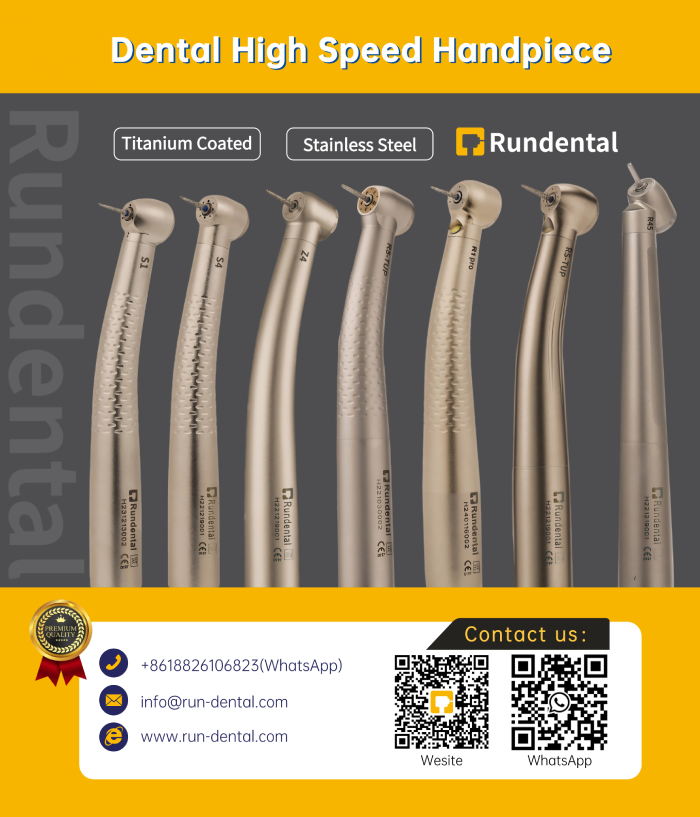Dental Handpiece Buying Guide for Distributors: How to Select High-Quality Models for Profitable Sales

Avoid common sourcing mistakes and improve product margins with evidence-based selection criteria.
ON THIS PAGE
- Dental Handpiece Types & Features
- Key Quality Indicators for Dental Handpieces
- Bearings and power transmission
- Cooling system design
- Anti-Backflow Technology and Infection Control
- Ergonomic Design
- Materials and Manufacturing Processes
- Clinical Fit & Market Potential
- Cost & After-Sales Considerations
- Price Range and Profit Margin
- R&D and Manufacturing Capabilities
- Warranty Policy
- Supply Stability
- Technical Support and Training
- Summary: 4 Key Steps to Making Smart Procurement Decisions
Profit and reputation often start with keen attention to product details.
For dental equipment distributors, dental handpiece is an indispensable core product in their business portfolio. Faced with a vast array of brands and models on the market, making precise and efficient purchasing decisions is not an easy task.
Dental Handpiece Types & Features
Dental handpieces are primarily divided into two categories: high-speed handpieces and low-speed handpieces, each with its specific clinical applications.
High-speed handpieces are typically used for procedures requiring high rotational speeds, such as tooth preparation and prosthesis removal. For example, Rundental’s 4-hole high-speed handpiece delivers compressed air through four independent channels, achieving speeds exceeding 360,000 RPM to provide highly efficient cutting capabilities. These handpieces are commonly equipped with turbine systems and rank among the most prevalent devices in modern dental clinics.
Low-speed handpieces are ideal for more delicate procedures such as root canal therapy, prosthetic restoration, and implant surgery. The Rundental L1 low-speed kit with a 1:1 gear ratio exemplifies this category, delivering speeds up to 200,000 RPM with precise speed control and consistent torque.

Implant handpieces, as a specialized category within low-speed handpieces, are specifically designed for dental implant procedures. They typically consist of a head, handle,middle gear, and cartridge, featuring precision manufacturing and complex construction.
Key Quality Indicators for Dental Handpieces
Bearings and power transmission

The bearing is the core component of the dental high speed handpiece, directly influencing its lifespan and performance. Ceramic bearings, due to their high-temperature and high-speed resistance, have a threefold improvement in wear resistance compared to traditional steel ball bearings. With proper maintenance, their service life can exceed 500 hours.
Cooling system design
An effective cooling system can prevent the surgical area from overheating and avoid damage to the tooth enamel. A popular dental handpiece model(like Rundental S4 air turbine) usually adopt multi-point water spraying designs, such as a four-hole directional water spraying system, which can keep the intraoperative temperature stable below 35℃, effectively preventing tissue thermal damage.
Anti-Backflow Technology and Infection Control
Dental handpieces may experience backflow during standby, potentially drawing oral fluids and microorganisms into the device. Internal water channel anti-backflow design effectively prevents cross-infection, serving as a critical feature for meeting the “one-patient-use-one-disinfection” hygiene standard.

Ergonomic Design
The lightweight and well-balanced body significantly reduces fatigue during prolonged use by dentists. Premium dental handpieces typically feature ergonomic designs, such as Rundental’s new models R6, R7, and R2plus series, all equipped with a 100-degree angled head. This design not only provides a wider operating field of view but also alleviates fatigue caused by prolonged wrist strain during extended procedures.

Materials and Manufacturing Processes
As of November 2025, the superior surface materials available on the market are titanium and stainless steel. The advantages of using titanium alloy include its lightweight properties that significantly reduce hand fatigue during long procedures, excellent corrosion resistance suitable for repeated sterilization cycles, and superior biocompatibility that minimizes the risk of allergies or skin irritation.Meanwhile, stainless steel offers outstanding durability with strong scratch and wear resistance, cost-effective manufacturing for more affordable pricing, and proven reliability supported by long-term clinical use and easier maintenance.
Rundental’s newly launched R1pro-Titanium LED Turbine and R4-Steel LED Turbine utilize these materials, effectively balancing price and quality. You may click the product links for more information or contact us to obtain detailed product specifications.

Clinical Fit & Market Potential
Different clinical scenarios require dental handpieces with distinct characteristics. Understanding these requirements helps you precisely target your market.
General Dental Procedures: For comprehensive dental clinics, high-speed handpieces and universal low-speed handpieces are essential equipment. Focus on versatile, easy-to-operate models like Rundental’s handpiece sets, which include high-speed turbines, push-button handpieces, and 4-hole handpieces to meet diverse oral care needs.
Implant Specialty: Implant handpieces require stable torque and precise speed control. For instance, some specialized implant handpieces feature unique torque-boosting systems that deliver high torque at low speeds, providing optimal power for implant site preparation.
Cost & After-Sales Considerations
Price Range and Profit Margin
Dental handpieces span a wide price spectrum, ranging from basic models costing tens of dollars to high-end products priced in the hundreds. Standard implant handpieces typically fall between $100 and $300, while premium brand equipment may exceed $500. As a distributor, it is essential to strike a balance between price and quality to ensure customers receive the most value-driven products.
Price range reference sourced from Alibaba
R&D and Manufacturing Capabilities
Manufacturers with in-house R&D and production capabilities typically offer more consistent product quality and competitive pricing. For example, Rundental, a manufacturer with 14 years of experience, possesses independent R&D and production capabilities, with products exported to Europe, America, the Middle East, Southeast Asia, and other regions.
Warranty Policy
A reliable warranty policy demonstrates a supplier’s confidence in their product quality. Reputable brands typically offer at least one year of warranty coverage, reducing your operational risks.
Supply Stability
Ensure suppliers can deliver goods promptly with robust logistics support, while also considering their ability to fulfill orders quickly and on time. This is crucial for maintaining your inventory and meeting customer demands. In practice, we’ve observed that some clients report issues with companies solely focused on trading, as they often encounter problems in supply and logistics, disrupting transactions.
Technical Support and Training
Select suppliers offering comprehensive technical training and marketing support. They provide partners with product training and market promotion assistance, helping you better serve end customers.
Summary: 4 Key Steps to Making Smart Procurement Decisions
- Identify Target Market Needs – Understand the most frequently performed dental procedures, procurement budgets, and brand preferences of your clients (large hospitals, private clinics, or specialty medical institutions).
- Evaluate Product Technical Specifications – Focus on handpiece speed, torque, cooling systems, anti-retraction features, and ergonomic design to ensure alignment with clinical requirements.
- Consider Total Cost of Ownership – Beyond purchase price, factor in logistics costs, inventory management, after-sales service expenses, and potential repair fees.
- Ensure Robust After-Sales Support – Verify suppliers offer comprehensive technical training, warranty policies, and timely repair services to mitigate operational risks.
By adhering to the principles and recommendations outlined in this guide, you will be able to provide your clients with high-quality dental handpieces that genuinely meet clinical needs. This approach will help you establish a solid professional reputation and achieve sustained profit growth within the highly competitive medical device market.